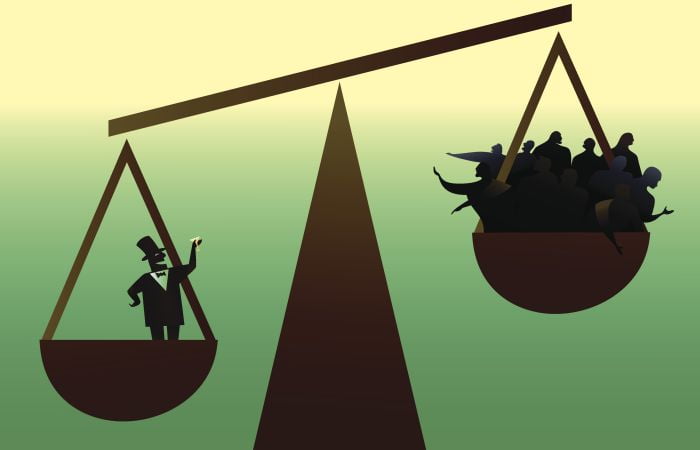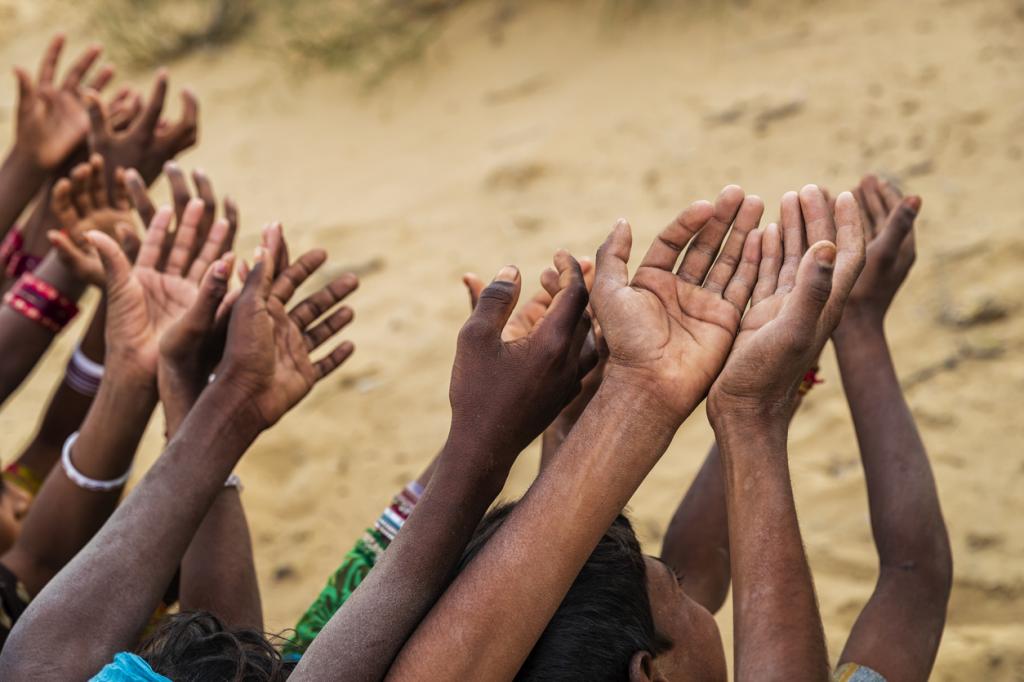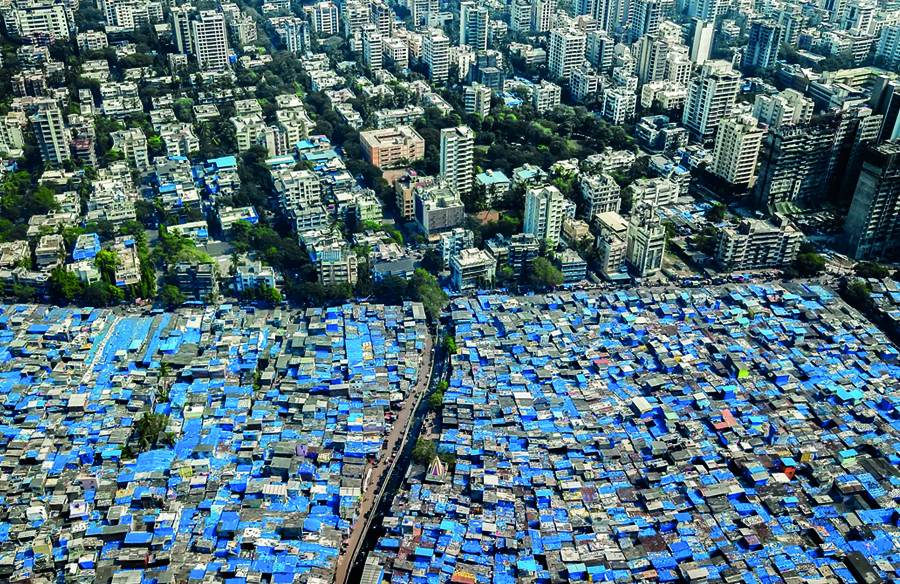Published on the opening day of the World Economic Forum in 2023, Oxfam India’s report, titled Survival of the Richest – The India Supplement is a stark reminder that income inequality is not simply alive, but growing every day. The report, backed with evidence from various sources, retells India’s economic story with a clear message: tax the rich, help the poor. This article surmises some of the key takeaways from the report, and the economic theory it subverts.
Scarcity and the crisis
Scarcity is the first concept you learn of in most high school economics courses. The world is low on resources, and the job of every economic system is to determine how to distribute these limited resources. Oxfam India’s 2023 report, accurately titled “Survival of the Richest“, chooses to contend with this concept. Their report instead claims that resources are not scarce in India, or in the rest of the world. Instead, it is the inequitable distribution of resources that creates scarcity in the first place.
The paper is littered with examples of this. Taxing the 10 richest Indian billionaires at 1% can fill vacancies in elementary schools across the country for thirteen years. Taxing all of India’s billionaires at 2% would support the malnourished in the country for three years.
The report makes it clear. There is no dearth of wealth in the country – it is all simply accumulated at the very top. The top 30% of Indians own 90% of the wealth in the country. It is the rest of the country – the other 70% – who suffer from the effects of scarcity. They are the world’s largest poor population, dying due to malnutrition, lack of access to healthcare, and housing. This is the only population affected by scarcity.

The general economic theory states that recessions, such as the one after the COVID-19 pandemic, are periods of time where the economy is in a downturn, and the nation’s overall wealth contracts. Unemployment rises, consumer spending drops, and individual income drops.
Yet, these theories don’t apply to the richest in our country. The total number of billionaires increased from 106 to 122 in 2022. The Adani group chairman, Gautam Adani, had his wealth multiply eight times during the pandemic. At a moment when most Indians were struggling to make ends meet, these people profited, over and over again, from a dying economy. The cost of this concentration is severe – for the rest of the economy, there is no breathing room and no way out.
Trickle-down economics
The billionaires will not save us. There are still many who believe so. Their large corporations are apparently saviours of the common folk for providing jobs and employment to the ailing middle class. As such, the massive tax breaks that these mega-corporations receive are not simply a hopeless venture, but instead a boost to the economy. But the theories of trickle-down economics have been tested time and time again, and they have not succeeded. It is merely a myth, repeated over and over again hoping to be the truth.
Unfortunately, trickle-down economics entered the Indian economic landscape in the form of tax cuts to the wealthy in 2019. Intended as a measure to increase supply pre-pandemic, the measure was misguided two-fold. Firstly, any idea that this tax benefit would ultimately end up in the pockets of the middle was unfortunately incorrect.

Data from June 2020 showed that companies did not reinvest their profits into their companies, instead using them to cover debts or add to savings. Furthermore, any supply-side measures proved useless during the pandemic due to the abysmally low demand during the recession period. What this meant is that the government missed out on the almost 2 lakh crore tax cut, which could have proven imperative in the cash-strapped times of the COVID-19 pandemic.
Who is paying the taxes?
To understand taxation, it might be necessary to return to the fundamentals of running a nation. Taxation from an individual’s perspective might simply include a payment to the government. However, from a nation’s point of view, taxes are government revenue. Data from the Oxfam report show that taxes constitute almost 88% of all government revenue.
The pursuit of supply-side economics in terms of tax breaks to corporations has stripped the government of 1 lakh crore rupees between 2020-2021. This money must be recouped in one way or the other, and the method the government has used to do so is to either increase indirect taxes, ie. Goods and Services Tax (GST), or to reduce spending on healthcare, education, and other welfare benefits for the poor. Ultimately, what this results in is the greatest burden on the middle and working-class population of the country, bearing the brunt of the government’s leeway with the corporate sector.
Also Read: How Does Gender Inequality Contribute To Chronic Malnutrition In India?
An increase in indirect taxes is particularly regressive when taking into account the percentage of household income the poor spend on necessities such as food. Oxfam reports that the bottom 50% of the population eventually pays six times more on indirect taxation as a percentage of income as compared to the top 10%. This is what taxation in India has come to – a small group of billionaires growing richer and richer off the sacrifice of millions of starving taxpayers.
There is no dearth of mouths to feed, no dearth of limbs to heal, and no dearth of homes to be built in this country. It is necessary to analyse where tax money is going in order to decide to justify higher taxation.

India, despite its large impoverished population, also refuses to spend much of its budget on essential welfare services. It is among the countries with the least healthcare spending, spending only about 2.1% of its GDP on healthcare services. For reference, the global average for healthcare services is about 6%. This manifests itself in horrible fates for those who cannot afford to pay for healthcare out of pocket. It is not simply healthcare that is under-budgeted for: medical infrastructure, child nutrition, and even child education all require significant government investment for a well-supported nation.
Unequal impact
While exploring inequality between the rich and the poor, there is no question that there are inequalities among the unequal. People lower on socially defined social hierarchies, such as women and SC/STs all face a higher burden of income inequality. The Oxfam report highlights several causes of a more intense burden on marginalised communities, including:
1. Women’s exclusion from inheritances, despite law enshrined in the Hindu marriage act
2. Dalit and other lower caste women are being forced into inhumane, undignified labour conditions
3. Increased participation in an informal economy over a regularly-salaried job
Also Read: Analysis: The Social Inequities That COVID-19 Pandemic Exacerbated
Every aspect of marginalisation builds upon itself, intersecting in varied ways. This behemoth of overlapping marginalisations weighs heavily on the bottom of the societal hierarchy: the poor, the lower caste, women, and LGBTQ+ individuals. Every tax break and incentive given to corporations dig a hole deeper for them, and it seems like no one is helping them out.

What are the solutions?
The Oxfam report dedicates a full chapter to solutions to India’s rapidly increasing income inequality. Firstly, it recommends balancing the tax burden between the rich and the poor, ensuring that those with means pay more than those who are struggling to make ends meet. Practically, this means instituting a wealth tax for the top 1% of society, with higher rates for millionaires, multi-millionaires, and billionaires. This also means lowering indirect taxes, such as GST, on essential goods such as food and increasing taxes on luxury goods, simultaneously increasing revenue and decreasing the tax burden on the poor.
Also Read: No Public Toilets For Women Beggars In Delhi-NCR
Lastly, the report recommends stronger welfare policies for the millions without basic needs. This means improving access to healthcare and education, to the point that India’s spending on welfare lines up with that of the rest of the world. This also includes a strong social safety net, especially in the informal sector, allowing them to buttress in times of crisis such as these. This is the only way for India that treats its people with dignity and respect, allowing them the social mobility to make their way in the world.






